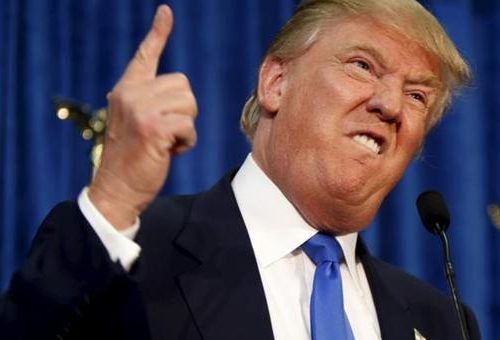How The Trump Administrations Anti-Regulation Message Will Hurt American Workers, Local Communities & The Environment

The Trump Administration’s anti-regulation rhetoric, combined with recent environmental, health and safety roll backs, is likely creating a “perception problem” among some business leaders that these regulations are no longer relevant or important. For example, I’ve heard several of our customers joke or comment about this issue in recent months. The common theme being, “Now that Trump’s in office, we don’t need to worry about OSHA and EPA anymore.” Some of those comments are in jest, but it’s not hard to imagine that many might actually believe this to be true. If so, this could result in putting many American workers, the environment and local communities at significant and unnecessary risk.
As is well known by now, one of Trump’s major campaign platforms was his promise to eliminate regulations that “bloat government and kill jobs.” In the past 2 weeks we’ve seen some movement on this promise within the environmental, health and safety realm:
Environmental Roll Backs:
- On March 28th Trump signed an executive order that rolled back rules designed to reduce carbon emissions, lifted a moratorium on federal coal leases and removed a mandate that federal officials must consider climate change impacts before making new laws.
- Previously, Trump rolled back limits on extraction and burning of fossil fuels and eliminated a system requiring energy companies to pay federal emissions royalties.
Health and Safety Roll Backs:
2 weeks ago Congress repealed a portion of OSHA’s new Injury & Illness Recordkeeping rule and Trump blocked the Fair Pay and Safe Work Places executive order from the Obama administration. Both parties utilized the rarely used Congressional Review Act which allows congress 2 months to repeal recently implemented regulations.
- The congressional move didn’t repeal the entire rule, just a portion of it. This is a very important distinction. The new rule included a requirement for employers to maintain injury and illness records for 5 years after the event, which therefore allowed OSHA the right to fine employers for up to 5 years, rather than just 6 months, which has now been eliminated. Trump has yet to sign this move into law but probably will soon.
(Keep in mind that this change doesn’t include the new provisions requiring employers to electronically submit their OSHA 300A summary logs beginning January 1st, 2017. This was the major change in the new rule, and is still intact.)
- Trump, in a separate move, repealed the Fair Pay and Safe Work Place act. This included a provision requiring contractors and sub-contractors to disclose labor and employment violations when submitting bids for Federal contracts worth at least $500,000. This is why some referred to the rule as the “black-listing rule.” Opponents claimed that the rule included a requirement to include even allegations of violations. These disclosures would be used to determine which contractors were qualified to bid on large projects.
Again, these well publicized moves, combined with the rhetoric, could easily result in a perception amongst leadership and management of many US businesses that environmental, health and safety regulations are no longer important, and therefore can be ignored. This is a dangerous scenario, and especially worrying for businesses operating in high hazard industries such as manufacturing, construction, energy and industrial services.
Why is this perception component so criticial? It’s a well established fact that “management commitment” is the key underlying factor in determining the success, or failure, of any environmental, health and safety compliance program. Without this “top-down” commitment from senior leadership, EHS compliance is effectively doomed to failure. Without going into great detail on this subject, it essentially boils down to the fact that EHS compliance is costly and inconvenient for business. Money must be spent on EHS compliance resources (consulting/expertise, training, equipment, testing, engineering, and the list goes on), and time & resources must be spent towards implementation and ongoing management efforts. If senior leadership and management doesn’t accept and understand this reality, and consistently support compliance efforts despite these challenges, then again, it’s all doomed to failure.
If senior leadership of impacted US businesses take the Trump administration’s anti-regulation rhetoric to heart, and believe that EHS regulations “no longer apply,” this could create unnecessary risk. In other words, this “perception problem” could seriously undermine the management commitment component that’s so vital to the success of EHS compliance, which ultimately protects worker safety, the environment and local communities.
This “perception” threat becomes even more worrying for small businesses which make up the vast majority of our economy. Big companies typically realize the overall value proposition associated with EHS compliance. For example, they recognize the well established link between things like quality performance and safety performance (i.e. if you want to improve quality, then start by improving safety), and that US companies lose an estimated $1.4 Billion each year to all direct and indirect costs associated with workplace injuries and fatalities. Those losses include not only regulatory fines and penalties, but civil and even criminal liabilities, legal fees, lost production, retraining of lost employees, reputational & PR damage, increased insurance premiums, and the list goes on and on. Small companies aren’t nearly as evolved and resourced as their larger counterparts, and more often than not, are so consumed with surviving from this payroll to the next, that they rarely have the opportunity to address these EHS issue. In other words, even in the best of times it’s tough to find solid EHS management commitment in small business, now add to this the perception that EHS compliance no longer matters, and the resulting risk to employees, the environment and local communities rises dramatically.
What do you get when there’s no commitment to the environment and worker safety? I’ll start with some big international examples, then point out some “big industry” examples, and then expand on to how it can negatively impact small business.
You don’t need to look far to see the smog infested air of China, the raw sewage infested waters of Rio from the recent Olympics, or the estimated 7000 (according to an article in Fortune magazine) of construction workers who are anticipated to be killed or injured by the time the soccer stadiums are built for the upcoming world cup in in Qatar. These countries and their governments have virtually no EHS regulations in place to control these hazards and threats, and their leaders either don’t seem to care or don’t have the authority to make positive change. I don’t mean to sound overly alarmist and neither am I suggesting that the US is headed that way or doomed to the same fait, but I am saying that it’s a spectrum of risk and a potentially slippery slope of decline if we’re not careful. I think we can all agree that our country is better than that, and that none of us want such an outcome.
If these international examples don’t resonate, then consider the recent North American EHS disasters at West, TX when 14 people died when a fertilizer plant exploded, the huge BP gulf oil spill that not only killed 11 workers but created one of the biggest environmental disasters in US history, or the 47 people who were literally incinerated after a train carrying crude oil exploded in Quebec, Canada last year. Not only did many people needlessly lose their lives, but there was major environmental and property damage associated with each of these events. Then there’s the recent drinking water lead contamination disaster in Flint, MI and a growing lead contamination disaster playing out throughout California where elevated levels of lead have been found in children across the state. Officials still don’t know the source of the lead but are under increasing pressure to identify the threat. It may or may not be linked to the Exide Technologies disaster in the Los Angeles area where lead from the industrial facility has contaminated the soil in surrounding residential communities and caused major health concerns for local residents. These disasters illustrate what can happen when there’s a lack of commitment to managing environmental, health and safety issues in big industry. This is what happens when companies lose focus, interest and concern over EHS compliance and what can happen as a result to local communities.
What’s true for countries and big industry is equally true for small business. As noted above, small businesses are at even higher risk given their common lack of time, resources and expertise needed to manage these issues. For small business, the biggest risks involve worker health and safety since small companies rarely create the major environmental impacts of their larger counterparts. Historical data shows that on average 13 US workers die every single day on the job, and the vast majority of them work for small businesses.
So there you have it, really bad things can happen when senior leadership and management lose focus on the importance of managing environmental, health and safety regulations. And that focus depends almost entirely on the “management commitment” component that we’ve been discussing. The Trump administration has a responsibility to manage their messaging and ensure that vital environmental, health and safety regulations remain a priority for US businesses or risk a loss of focus and commitment to these issues that would almost certainly lead to unnecessary loss of life and injuries for American workers and damage to the environment and local communities.
It’s important to remember that these regulations are designed and intended to provide basic underlying preventative and protective measures to help ensure the wellbeing of American workers, our environment and local communities. These regulations don’t kill jobs, but undermining them will almost certainly lead to needless loss of life and suffering for the very workers that Trump has promised to protect and advocate for, not to mention damaging their local communities and the environment. The Trump administration must recognize this and act accordingly.
